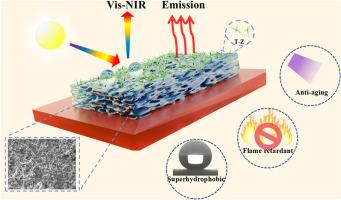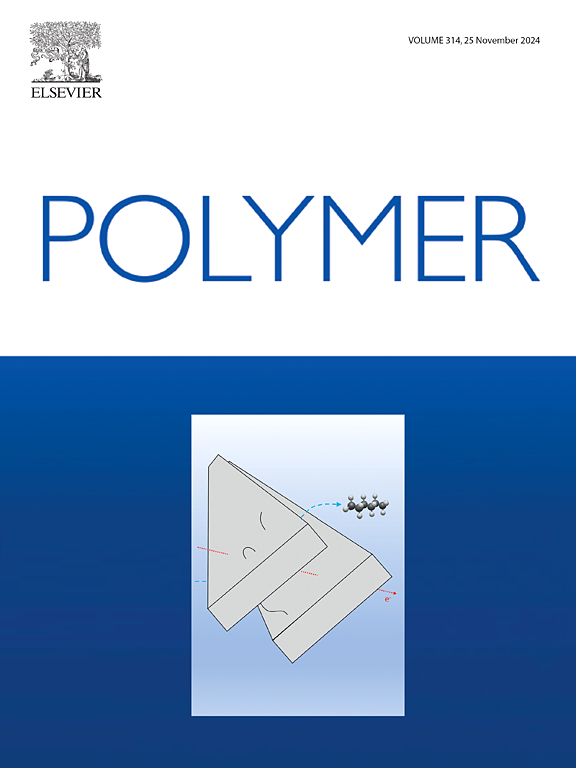Highly practical multifunctional radiative cooling films for multi-temperature applications
IF 4.1
2区 化学
Q2 POLYMER SCIENCE
引用次数: 0
Abstract
Passive daytime radiative cooling is a green, sustainable technology, however there are challenges in incorporating multifunctional radiative cooling technologies. In this paper, a biomimetic structure (PTP, porous tetra-needle zinc oxide whisker polydimethylsiloxane) with a needle-like structure on the surface and a porous structure in the interior is prepared by a simple process using inexpensive tetra-needle zinc oxide whiskers (T-ZnOw) as the filler particles and polydimethylsiloxane (PDMS) as the binder, which possesses the desired radiative cooling properties, and at the same time, it combines the anti-aging, thermal control flame retarding, and superhydrophobic properties. PTP film exhibits ideal reflectance (0.91) and emissivity (0.99), with an average temperature difference of 15.5 °C compared to Al, and maintains good radiative cooling performance under UV irradiation for 1000 h. The thermal conductivity of the PTP film is 0.931 W m-1 k-1. In the outdoor cooling test with a heat source, the average temperature difference is 13.3 °C compared to Al. The surface water contact angle (WCA) is 153.25° and the superhydrophobicity is maintained after more than 1400 h of aging. As a result, the PTP film has large potential in multi-temperature applications, such as buildings, factory sheds, and electrical appliances.

求助全文
约1分钟内获得全文
求助全文
来源期刊

Polymer
化学-高分子科学
CiteScore
7.90
自引率
8.70%
发文量
959
审稿时长
32 days
期刊介绍:
Polymer is an interdisciplinary journal dedicated to publishing innovative and significant advances in Polymer Physics, Chemistry and Technology. We welcome submissions on polymer hybrids, nanocomposites, characterisation and self-assembly. Polymer also publishes work on the technological application of polymers in energy and optoelectronics.
The main scope is covered but not limited to the following core areas:
Polymer Materials
Nanocomposites and hybrid nanomaterials
Polymer blends, films, fibres, networks and porous materials
Physical Characterization
Characterisation, modelling and simulation* of molecular and materials properties in bulk, solution, and thin films
Polymer Engineering
Advanced multiscale processing methods
Polymer Synthesis, Modification and Self-assembly
Including designer polymer architectures, mechanisms and kinetics, and supramolecular polymerization
Technological Applications
Polymers for energy generation and storage
Polymer membranes for separation technology
Polymers for opto- and microelectronics.
 求助内容:
求助内容: 应助结果提醒方式:
应助结果提醒方式:


